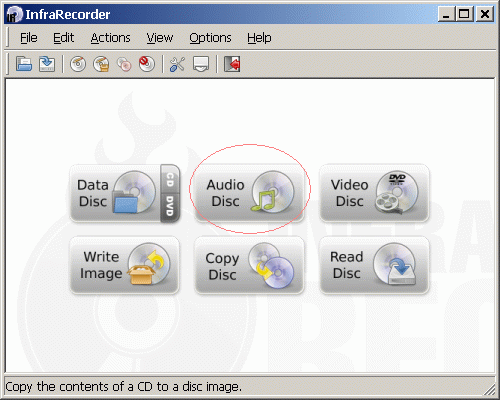
In 1979, Sony and Philips set up a joint task force of engineers to design a new digital audio disc. Although originally dismissed by Philips Research management as a trivial pursuit, the CD became the primary focus for Philips as the LaserDisc format struggled. Prototypes were developed by Philips and Sony independently in the late 1970s. Unlike the prior art by Optophonie and James Russell, the information on the disc is read from a reflective layer using a laser as a light source through a protective substrate. The compact disc is an evolution of LaserDisc technology, where a focused laser beam is used that enables the high information density required for high-quality digital audio signals.

It is debatable whether Russell's concepts, patents, and prototypes instigated and in some measure influenced compact disc's design. Following litigation, Sony and Philips licensed Russell's patents for recording, not the play-back part (then held by a Canadian company, Optical Recording Corp.) in the 1980s. Russell's patent application was filed in 1966, and he was granted a patent in 1970. Russell has been credited with inventing the first system to record digital video on an optical transparent foil that is lit from behind by a high-power halogen lamp, not a laser. More than thirty years later, American inventor James T. The optophone, first presented in 1931, was an early device which used light for both recording and playback of sound signals on a transparent photograph. 1.1 Digital audio laser-disc prototypes.According to the RIAA's midyear report in 2020, phonograph record revenues surpassed those of CDs for the first time since the 1980s. In the 2010s, revenues from digital music services, such as iTunes, Spotify, and YouTube, matched those from physical format sales for the first time. had dropped about 50% from their peak however, they remained one of the primary distribution methods for the music industry. īeginning in the 2000s, CDs were increasingly being replaced by other forms of digital storage and distribution, with the result that by 2010 the number of audio CDs being sold in the U.S. The format gained worldwide acceptance in 1983–84, selling more than a million CD players in those two years, to play 22.5 million discs. The first commercially available audio CD player, the Sony CDP-101, was released October 1982 in Japan.

#MAKE MP3 CD FOR CAR DATA DISK SERIES#
The standard is defined in the Red Book, one of a series of Rainbow Books (named for their binding colors) that contain the technical specifications for all CD formats. High-Definition Versatile Multilayer Disc (HD VMD)Ĭompact Disc Digital Audio ( CDDA or CD-DA), also known as Digital Audio Compact Disc or simply as Audio CD, is the standard format for audio compact discs.



 0 kommentar(er)
0 kommentar(er)
